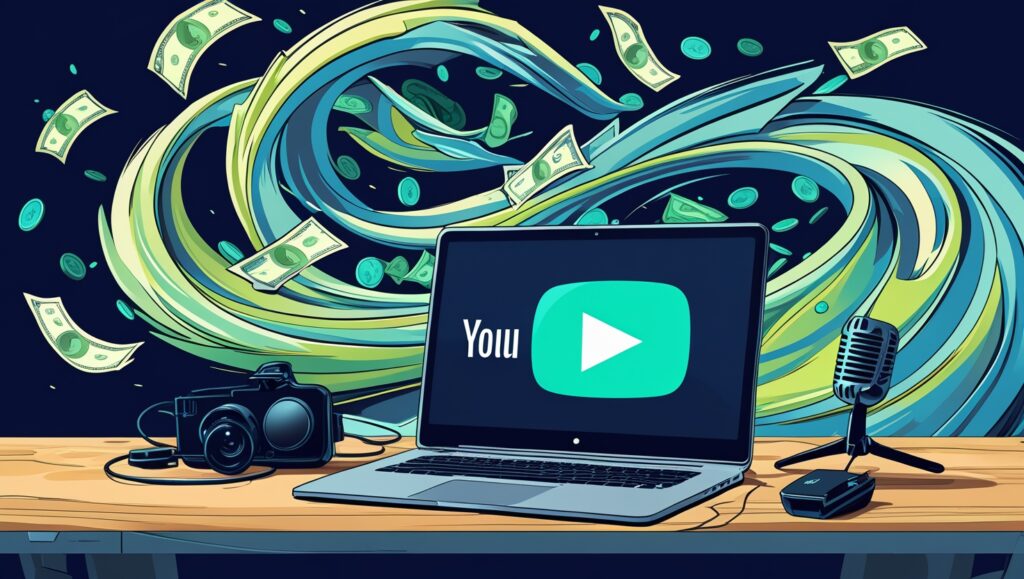How to Start a YouTube Channel and Monetize It

YouTube has grown into one of the largest platforms for content creators, providing a space where individuals can share their passions, entertain audiences, and build a thriving online business. If you’ve ever considered starting a YouTube channel, now is the time. This comprehensive guide will walk you through the process, from setting up your channel to monetizing your content effectively.
Step 1: Choose Your Niche
The first step in starting a successful YouTube channel is choosing a niche that aligns with your passion and expertise. Your niche should reflect what you enjoy creating content about and what has an audience on YouTube. Popular niches include:
- Gaming
- Beauty and Fashion
- Technology Reviews
- Education and Tutorials
- Fitness and Health
- Vlogging and Lifestyle
- Travel
Key Considerations:
- What topics can you consistently create content about?
- Is there a demand for this type of content?
- How competitive is the niche?
Step 2: Create Your YouTube Channel
- Sign into YouTube using your Google account.
- Click on Your Profile Picture in the top-right corner and select “Create a Channel.”
- Choose a Channel Name that reflects your content and is easy to remember.
- Customize Your Channel by uploading a profile picture, banner image, and adding a compelling channel description.
Pro Tip: Use keywords in your channel description to improve discoverability.
Step 3: Plan and Create Quality Content
Quality content is the backbone of any successful YouTube channel. Plan your videos in advance and ensure they are engaging, informative, or entertaining. Create a content calendar to maintain consistency.

Video Ideas:
- How-to videos and tutorials
- Product reviews and unboxings
- Vlogs and day-in-the-life videos
- Listicles and countdowns
Essential Equipment:
- Camera: DSLR, mirrorless, or smartphone with high-quality video.
- Microphone: External microphone for clear audio.
- Lighting: Softbox lights or natural lighting.
- Editing Software: Adobe Premiere Pro, Final Cut Pro, or DaVinci Resolve.
Step 4: Optimize Videos for Search (SEO)
To ensure your videos reach a wider audience, optimize them for YouTube’s search algorithm. Use relevant keywords, compelling titles, and engaging thumbnails.
Optimization Tips:
- Title: Include keywords and keep it catchy.
- Description: Use keyword-rich descriptions and add links to your website or social media.
- Tags: Add relevant tags to improve searchability.
- Thumbnails: Create eye-catching thumbnails with bold text and images.
Step 5: Upload Consistently
Consistency is key to building an audience. Set a schedule (weekly, bi-weekly) and stick to it. Regular uploads keep your audience engaged and signal to YouTube that your channel is active.
Step 6: Engage with Your Audience
Building a community is essential for growth. Respond to comments, ask for feedback, and create polls to engage your viewers.
Engagement Strategies:
- Host live Q&A sessions.
- Encourage viewers to like, share, and subscribe.
- Use the YouTube Community tab to interact.
Step 7: Monetize Your Channel
To monetize your channel, you must first meet YouTube’s eligibility requirements:
- 1,000 subscribers
- 4,000 watch hours in the past 12 months
Once eligible, join the YouTube Partner Program (YPP) by following these steps:
- Go to YouTube Studio.
- Select Monetization from the left menu.
- Agree to the YouTube Partner Program terms.
- Connect an AdSense Account.
Ways to Monetize:
- Ads: Earn revenue through ads that play before, during, or after your videos.
- Channel Memberships: Allow viewers to subscribe to exclusive content.
- Super Chats: Receive donations during live streams.
- Merchandise Shelf: Sell your own branded merchandise.
- Affiliate Marketing: Promote products and earn commission from sales.
Step 8: Promote Your Channel
Promotion is crucial for growth. Share your videos on social media, collaborate with other creators, and utilize SEO strategies.
Promotion Ideas:
- Share clips on Instagram, TikTok, and Twitter.
- Collaborate with other YouTubers in your niche.
- Run Google or YouTube ads for exposure.
- Post in online forums and communities.
Step 9: Analyze and Improve
Use YouTube Analytics to track your channel’s performance. Identify which videos perform well and why. Adjust your strategy based on viewer preferences and feedback.
Metrics to Track:
- Watch time
- Click-through rate (CTR)
- Audience retention
- Engagement (likes, comments, shares)

Final Thoughts
Starting a YouTube channel takes time and dedication, but with the right strategies, you can turn your passion into a profitable endeavor. Stay consistent, keep improving your content, and engage with your audience to grow your channel and unlock its full potential.






